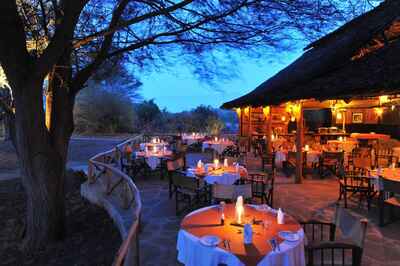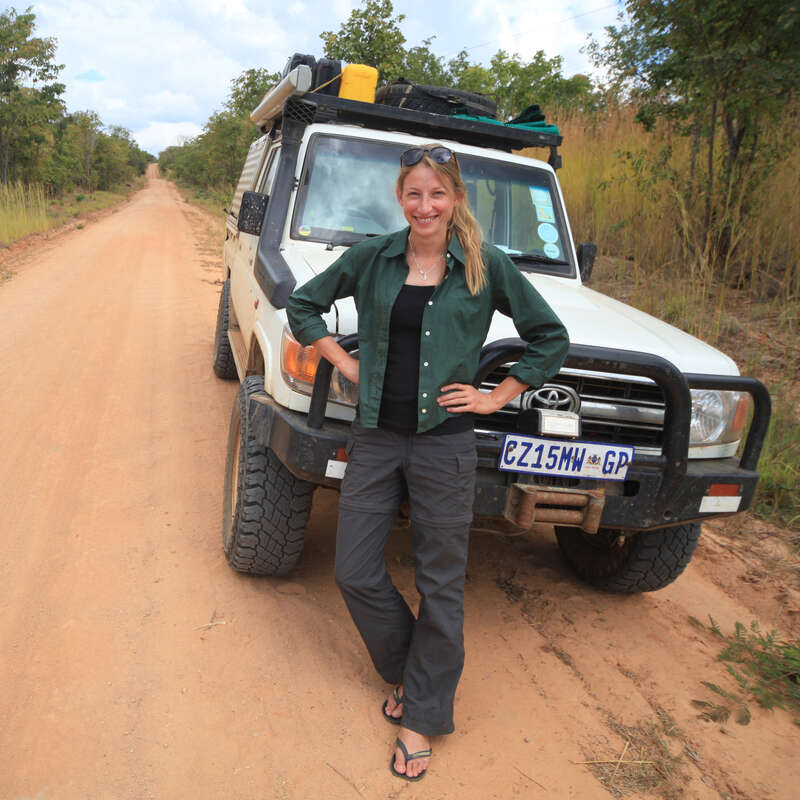About Satao Camp
Spread out among tamarind and acacia trees near the seasonal Voi River, Satao Camp is the only camp in this ...
... area of Tsavo East National Park. Fairly large by safari standards, it is owned and managed by one of Kenya’s most respected safari companies, and is regularly visited by baboons, impalas, giraffe and hippo, while the central area is an oasis for birdlife and various nocturnal creatures, including genets: in the bar, one regular genet drapes himself on an overhead rafter.
In the two decades since it was built, Satao Camp has matured into one of the most welcoming camps in southern Kenya. The herds of impala, the bull giraffe that wanders around camp, frequent elephants and lions at the waterhole, and a riot of birdlife together create a magical impact on first-time visitors – and one which doesn’t disappoint experienced travellers. The food at Satao isn’t a stand-out feature, and the high-voltage overhead power lines that run close to the camp detract slightly from the bush feel of the area, but many visitors are so captivated with the place that they barely notice them.
Our view
In the two decades since it was built, Satao Camp has matured into one of the most welcoming camps in southern Kenya. The herds of impala, the bull giraffe that wanders around camp, frequent elephants and lions at the waterhole, and a riot of birdlife together create a magical impact on first-time visitors – and one which doesn’t disappoint experienced travellers. The food at Satao isn’t a stand-out feature, and the high-voltage overhead power lines that run close to the camp detract slightly from the bush feel of the area, but many visitors are so captivated with the place that they barely notice them.
Accommodation
15 tents, 5 suites
Children
Good for 8+
Open
All year
Activities

4WD Safari

Birdwatching

Private activities
Traveller reviews of Satao Camp
13 real, un-edited reviews from Expert Africa's travellers.
Arrived 20 Jan 2025, 1 nights
"Satao Camp review"
Overall rating: Good
Arrived 27 Oct 2024, 2 nights
"Satao Camp review"
Overall rating: Excellent
Arrived 24 Oct 2024, 2 nights
"Satao Camp review"
Overall rating: Excellent
Arrived 13 Nov 2023, 3 nights
"Satao Camp review"
Overall rating: Good
Arrived 18 Jan 2020, 3 nights
"Mixed time at Satao Camp"
Overall rating: Average
Arrived 7 Mar 2019, 3 nights
"Satao Camp review"
Overall rating: Good
Arrived 3 Feb 2019, 2 nights
"Special Satao"
Overall rating: Excellent
Arrived 3 Jun 2017, 1 nights
"You don't have to leave the camp"
Overall rating: Excellent
Arrived 29 Dec 2016, 3 nights
"Great safari at Satao Camp"
Overall rating: Excellent
Arrived 29 Dec 2015, 2 nights
"Excellent set-up at Satao"
Overall rating: Good
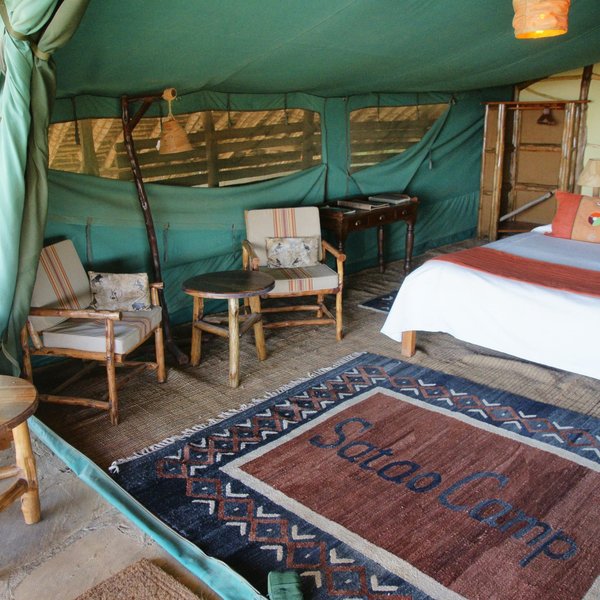
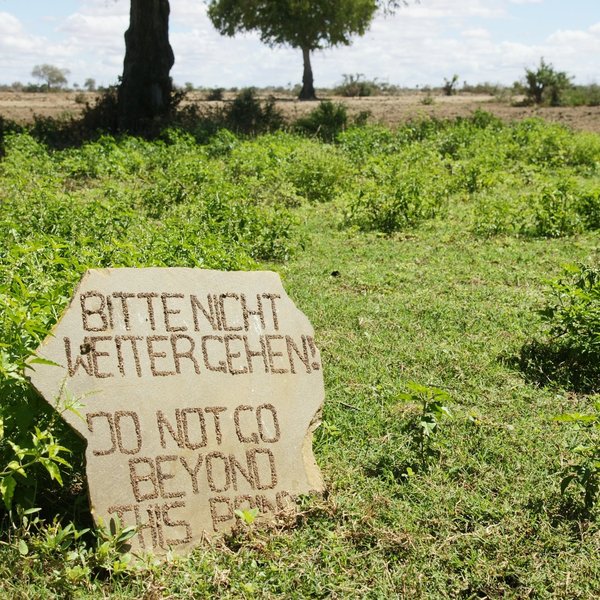
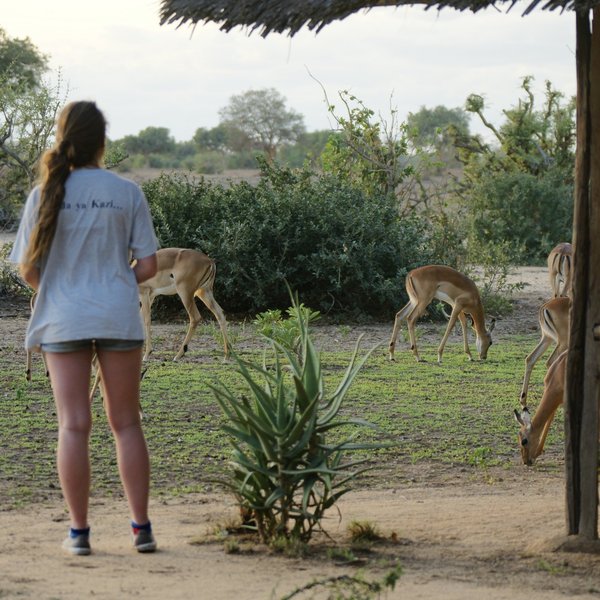
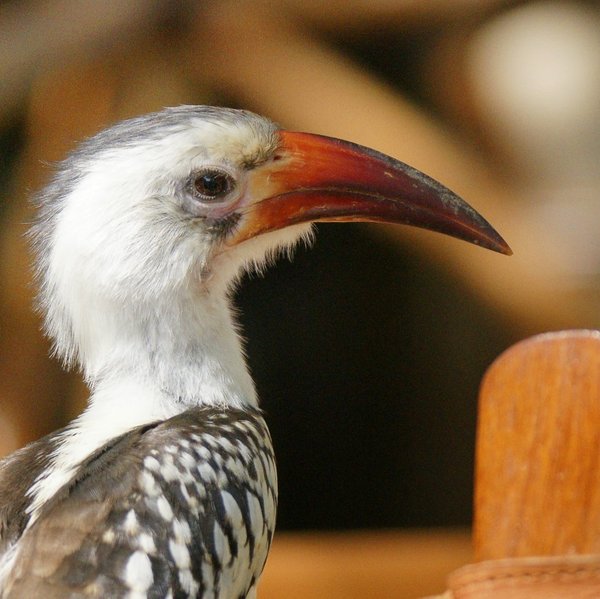
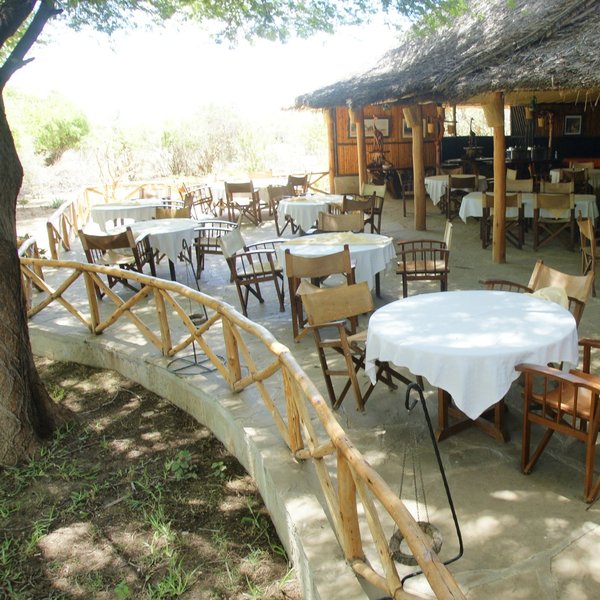
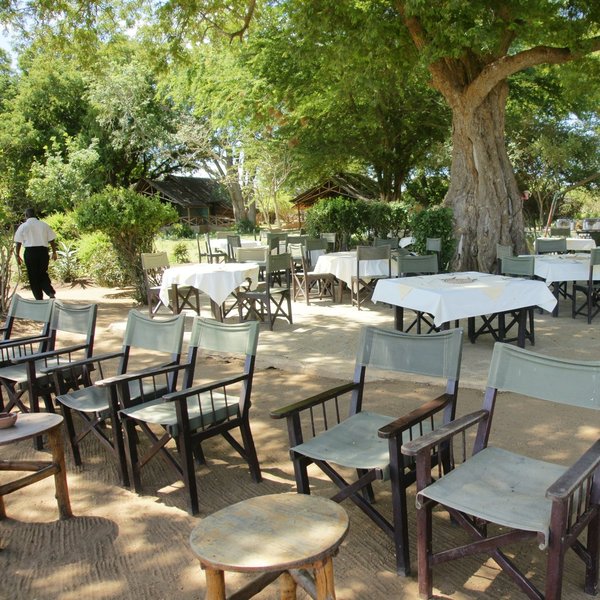
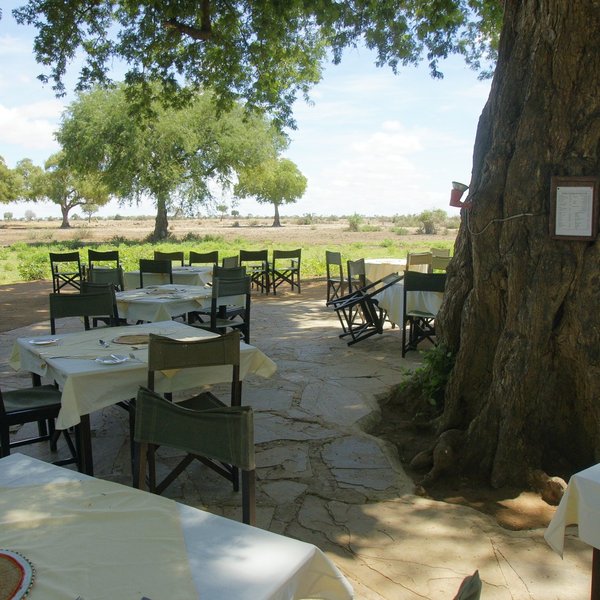
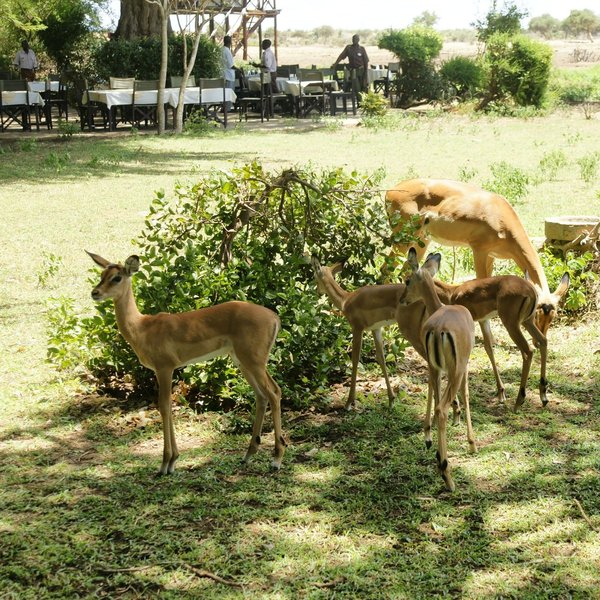
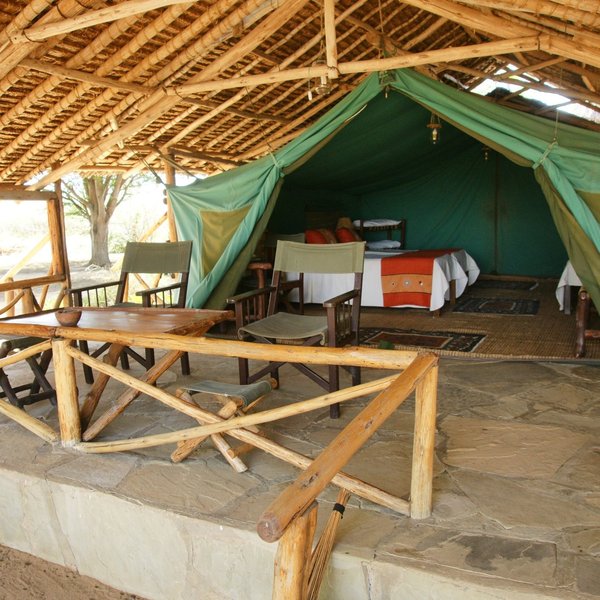
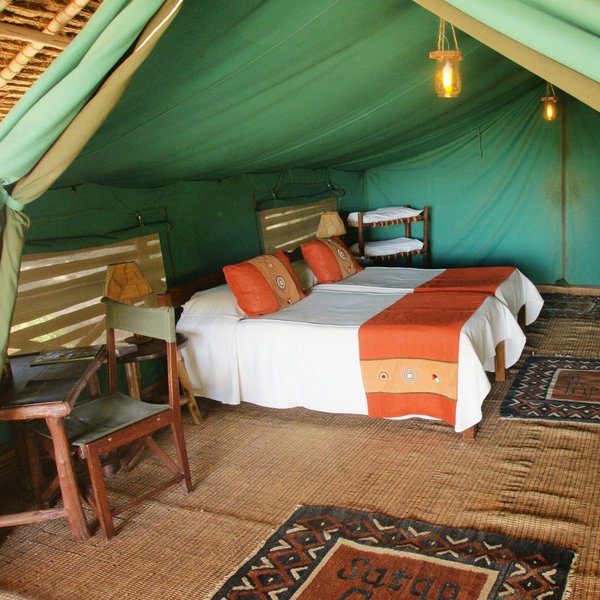
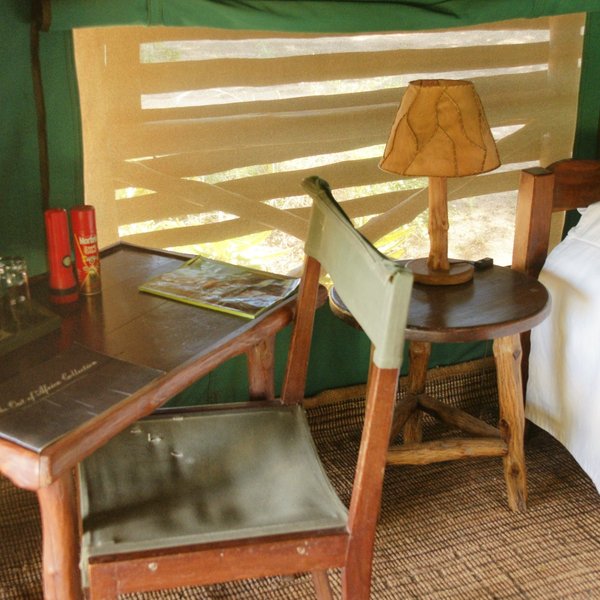
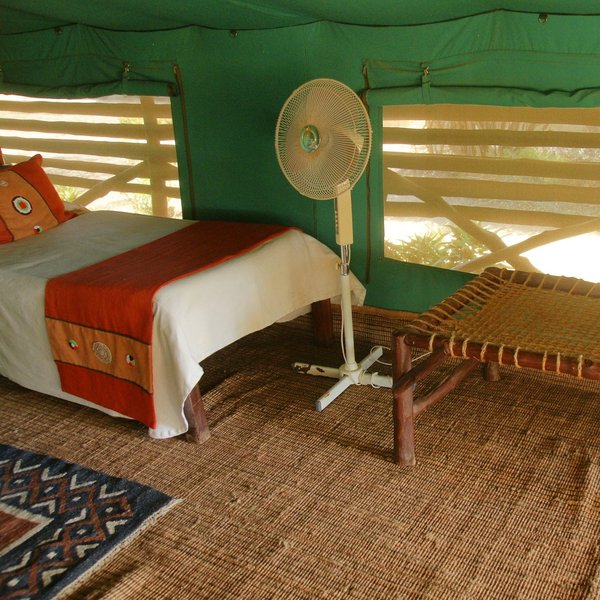
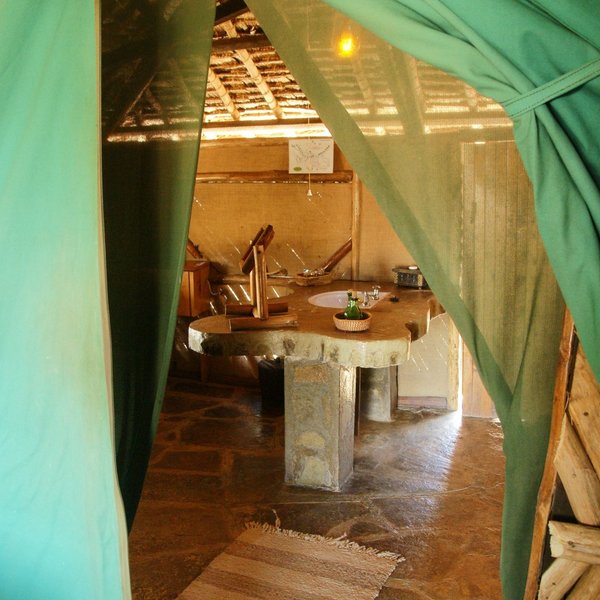
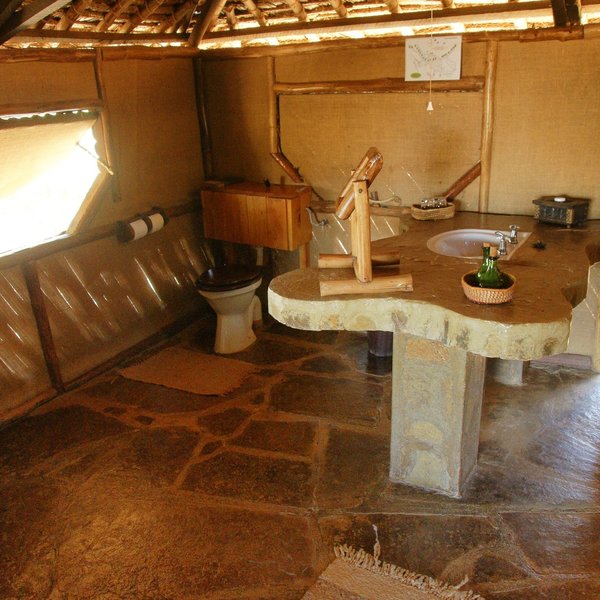
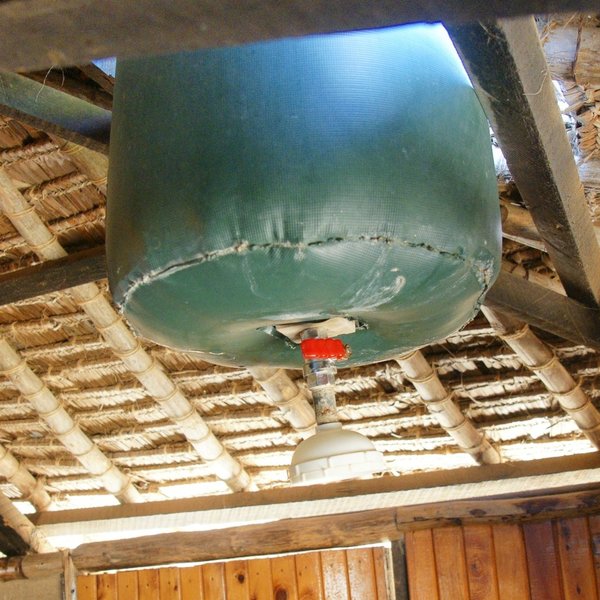
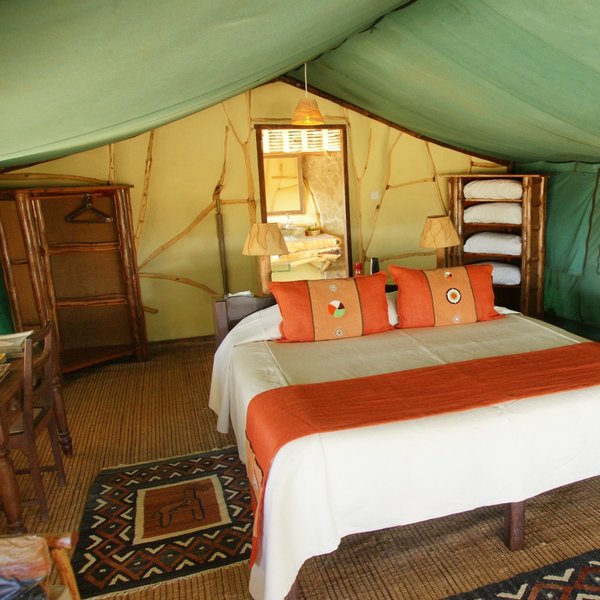
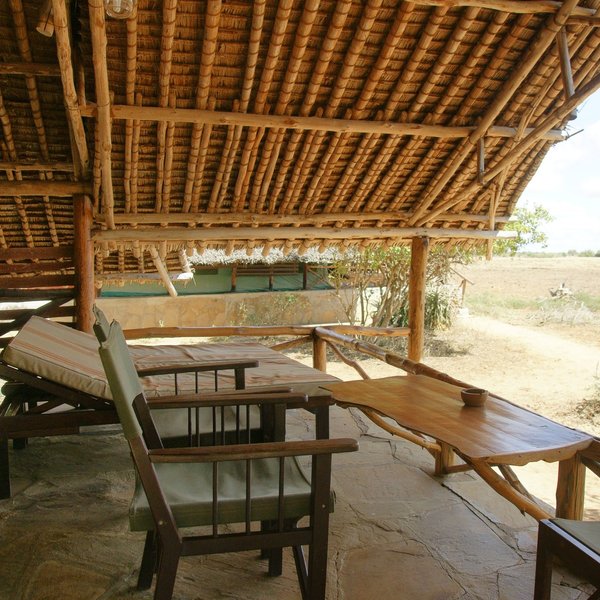
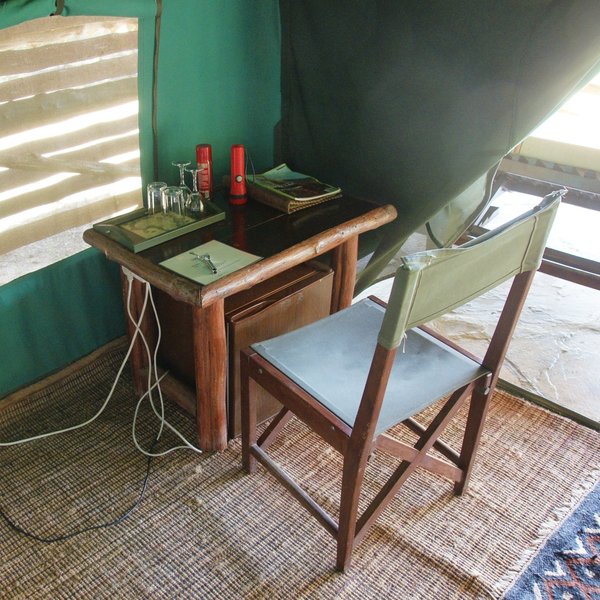
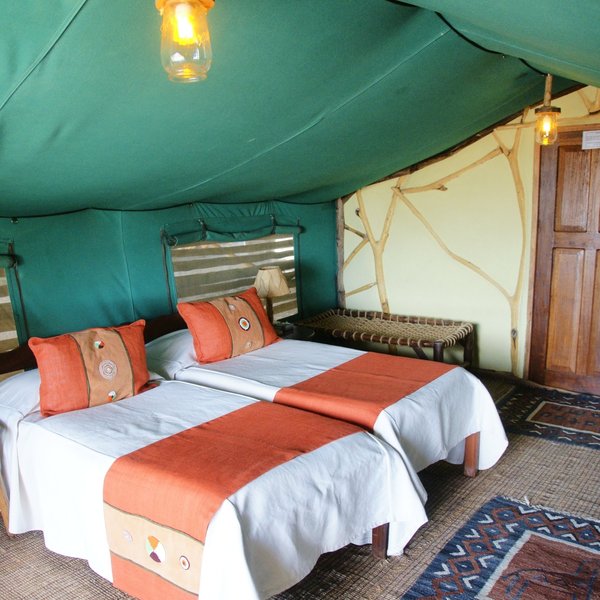
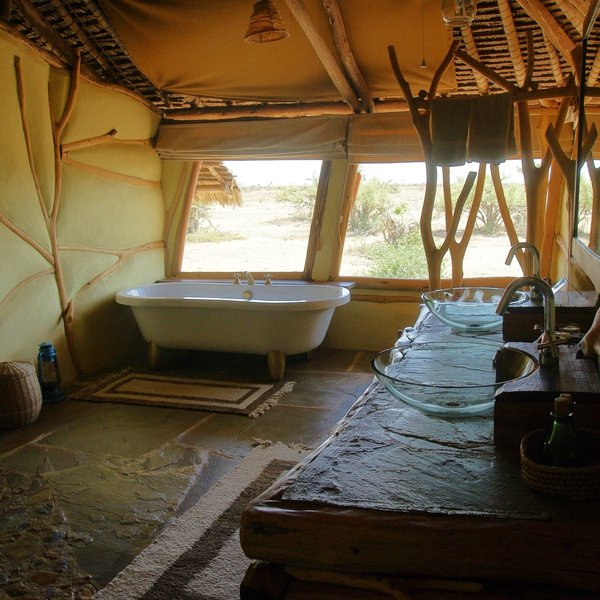
Expert Africa's gallery
When we travel we take lots of photos ourselves to give you a real and un-edited view of the safaris. See our 28 pictures and 1 videos of Satao Camp to get the candid view.
View gallerySafaris visiting Satao Camp
Just ideas, we'll always tailor-make a trip for you
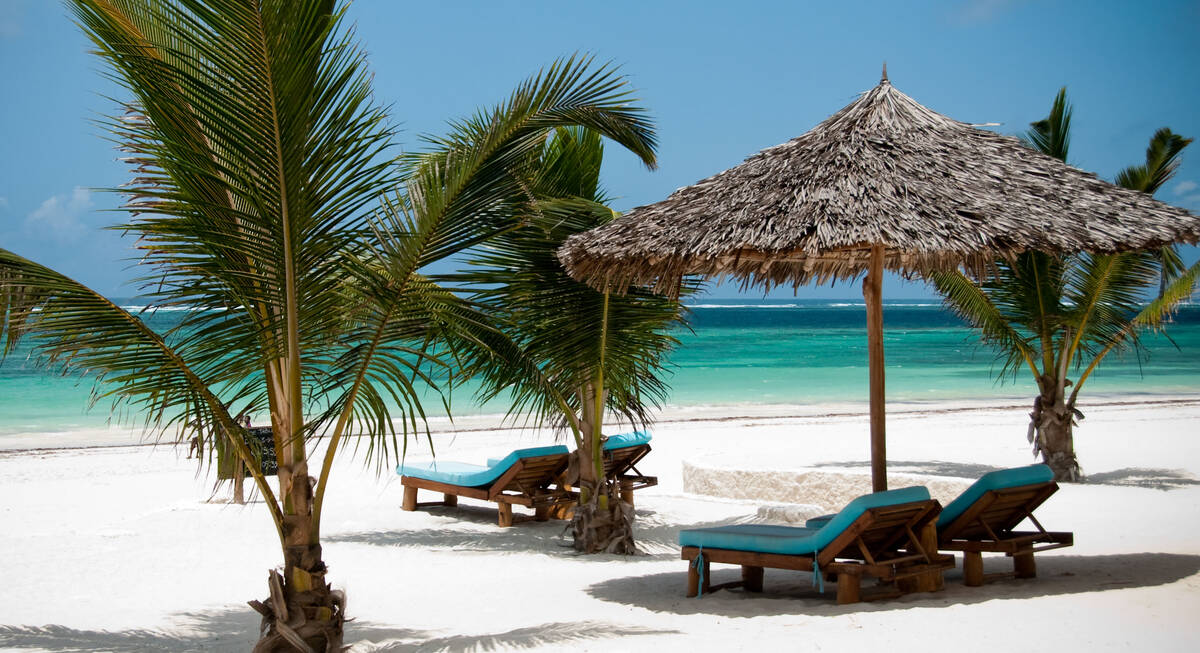
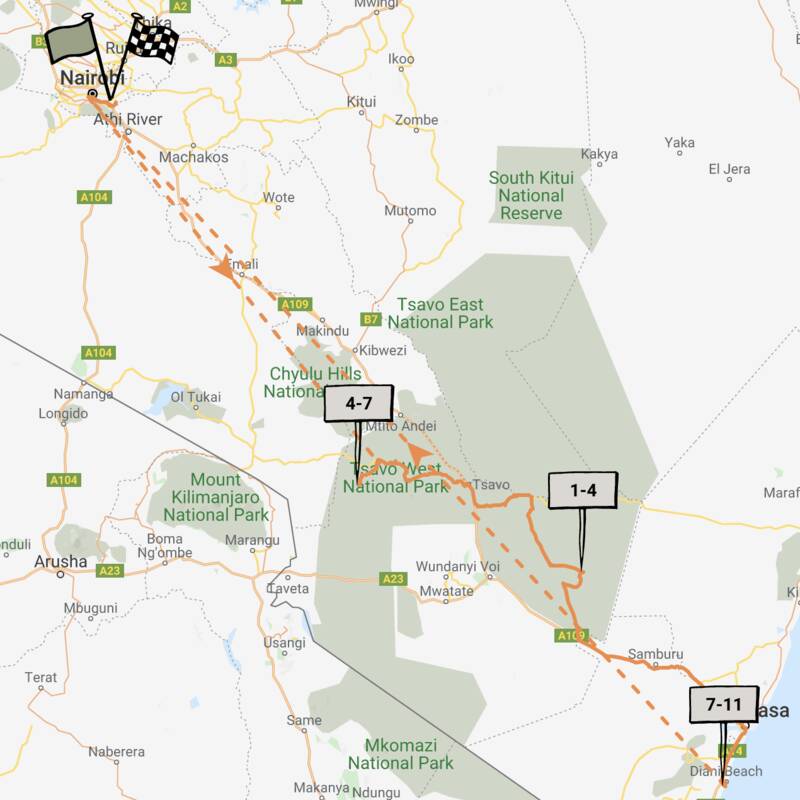
Elephant Safari
10 days • 3 locations • 1 country
NAIROBI AIRPORT TO NAIROBI AIRPORT
This example of a mid-range Kenya safari and beach trip explores the wildlife of Tsavo West's volcanic plains and woodlands, Tsavo East's immense plains and the white-sand beaches and lush environment of Diani Beach.
Visiting Tsavo East, Tsavo West and 1 other area
US$5,910 - US$6,350 per person
Satao Camp: Our full report
Spread out among tamarind and acacia trees near the seasonal Voi River, Satao Camp is the only camp in this ...
... area of Tsavo East National Park. Fairly large by safari standards, it is owned and managed by one of Kenya’s most respected safari companies, and is regularly visited by baboons, impalas, giraffe and hippo, while the central area is an oasis for birdlife and various nocturnal creatures, including genets: in the bar, one regular genet drapes himself on an overhead rafter.
Somewhat aptly, satao means ‘giraffe’ in the language of the Walingulu, the original, hunter-gatherer inhabitants of this area. As the camp is unfenced, all your movements after dark require an escort – which is a plus, as it gives you a shot of local cultural or natural history insight from your camp guard on every walk to and from the dining area. A paging button in each tent means that you can call an askari for an escort.
The permanent structures of Satao’s main central area are ranged out behind the sandy drop-off area where you arrive. Beyond the simple, open-sided reception building, spacious and shady dining and lounge terraces under high-pitched makuti-tile roofs are set on either side of a raised central bar area, with a campfire directly in front. Open plan and essentially open-air, these main areas are low-key and welcoming, but quite large. Away to the south is a fully open-air lunch area that has good views of the plains and a large waterhole.
Close to the waterhole, a high-level viewing deck known as the Lookout, with a shaded platform and directors’ style, canvas chairs, is accessed up a steer flight of steps. You can ask to be woken in the night if anything you want to see makes an appearance at the waterhole.
- Linked to the main areas by largely natural sand paths are Satao’s 20, large, thatch-shaded tents, which are ranged across the broad, wooded plain around the waterhole. Stretching in a northerly direction from the camp’s central area is one wing of six standard tents plus a larger suite tent (‘Director’s Suite’). These tents face west or north-west, into the sunset, but are furthest from the waterhole (about 150m away).
- In the other direction, nine standard tents range westwards, their verandas facing north or north-east past a large grove of tamarind trees and the lunch area. Beyond are four more suite tents – Tent 17, Sala (the closest to the waterhole, 100m), Neka and Kocha .
- The 15 twin, double or triple standard tents are well- designed, traditional green-canvas safari tents – airy, light and simply constructed. They’re mounted on raised stone-and-concrete platforms, constructed in crazy-paving style that mirrors the floors in the central areas, and each has a veranda with two canvas chairs and a low table. Inside, the tents are floored with soft rush matting and rugs, with a simple writing table and chair, a rustic shelf unit and a basic clothes cupboard. The beds are not fancy but are comfortable and attractively covered, with reading lights on each bedside table. Although there are no mosquito nets, the tents are in theory mosquito-proof and are also mosquito-sprayed during the turn-down service every evening. There’s also a floor fan, which can be positioned wherever you prefer.
- Zipped flaps at the back of each tent lead to a large bathroom of solid construction, with polished stone floors, wood and hessian walls, and makuti-tile roofs. Cold water is plumbed in but the large reservoirs of the overhead safari showers are filled on demand (there’s a hand shower as well); there’s also a washbasin, small pivot mirror and flush toilet. Toiletries are provided in flasks and bottled drinking water is replenished every day.
- The five suite tents are similar to the standard tents but built on a grander scale and with extra furnishings. The verandas benefit from the addition of comfy recliners, double beds are actual double beds rather than joined twins, and each suite has a minibar (with regular Satao bar prices) and two small armchairs. In addition, there is a solid wall with a door separating the bathroom from the main tent. The bathroom itself has two designer washbasins, a bathtub and further hanging and storage space. Hot water to the suite tents is solar heated.
The main activities at Satao Camp revolve around early-morning and late-afternoon game drives in well set-up 4WD vehicles. As Satao is the only camp in this part of Tsavo East – a vast expanse of the park covering more than 1,000km² stretches between the camp and the Mombasa highway – in most of this area you can drive for miles without encountering another vehicle. Tsavo’s famous red elephants, coloured by the iron oxide in the earth, are the most iconic of the park’s animals, which include good numbers of cheetahs and lions, and less common grazers such as gerenuk, lesser kudu and Grevy’s zebra. An hour’s drive to the north of the camp is the Galana River, which flows for nearly 100km through the park and can be closely followed for much of its course. There are several riverside viewpoints including Lugard’s Fall, and Crocodile Point (sometimes described as nature trails, but they’re basically just short footpaths), where you can get out and stretch your legs.
Activities
4WD Safari
Birdwatching
Private activities
Families & children
- Attitude towards children
- 'No problem'
- Property’s age restrictions
- No restrictions
- Special activities & services
- There are nature walks in camp, with a naturalist, but there is nothing specifically designed for children.
Babysitting is available on request (no charge), using housekeeping staff or camp guards. Trained babysitters are not available. - Equipment
- Three cots and two highchairs are available.
- Generally recommended for children
- Satao is a family-friendly camp with a relaxed ambience, and is a recommended choice for families, though an enthusiasm for the wildlife and the bush location is always important. With impala, baboons and even giraffe right by the tents, it is great fun for kids. Kicking a ball around isn’t an option, however, as there is wildlife everywhere. There’s no pool.
Food & drink
- Usual board basis
- Full Board & Activities
- Food quality
- Satao’s food is not necessarily its most outstanding feature, but its hearty and plentiful, so won't go hungry! The standard hotel/restaurant fare at dinner included good vegetable soups and homemade hot rolls, shredded salad with dressing, and a choice of grilled chicken, beef goulash or onion pizza for main course, with roast potatoes, chips or rice, and vegetables.
Breakfast 6.00–9.00am is a buffet with an egg station and plenty of options, including home-made bread.
Lunch, served 12.30–2.30pm, is also a buffet, with a choice of main dishes.
Dinner, from 7.30–pm to 9.00pm, is a six-course buffet or plated service, incorporating soup, salad, main course, dessert, cheese and coffee – with a choice of three main dishes and always a vegetarian option.
Afternoon tea includes tea, coffee and cakes. - Dining style
- Individual Tables
- Dining locations
- Indoor and Outdoor Dining
- Further dining info, including room service
- Meals can be served on the tent verandas.
- Drinks included
- Extra:
Local beer: Ksh275 (approx U$3.50)
Soda: Ksh135 (approx U$1.50)
Glass of house wine: Ksh300 (approx U$4)
Our travellers’ wildlife sightings from Satao Camp
Since mid-2018, many of our travellers who stayed at Satao Camp have kindly recorded their wildlife sightings and shared them with us. The results are below. Click an animal to see more, and here to see more on our methodology.

100% success

100% success

100% success

86% success

71% success

71% success

71% success

71% success

57% success

50% success

43% success

29% success

14% success

0% success

0% success

0% success

0% success
Getting there
- Location
- Tsavo East National Park, Kenya
- Ideal length of stay
- Three nights
- Directions
- Visitors arrive by road from Mombasa (3 hours) or Malindi (4 hours) or by charter flight to Satao airstrip, about 2km away.
- Accessible by
- Fly-and-Transfer
Special interests
- Family safaris
- Satao makes for relaxed family safari holidays in Kenya with children 8+. Kids usually have great fun watching impala, baboons and giraffe right by the tents. The staff offers free child minding.
- See ideas for Family safaris in Kenya
- Photography safaris
- There's lots of wildlife around Satao Camp offering plenty of quirky photo opportunities. On our last visit this included a fairly relaxed bull giraffe, hippos after dark, a genet over the bar, insect life and numerous birds, including feed-from-your-hand hornbills.
- See ideas for Photography safaris in Kenya
Sustainability
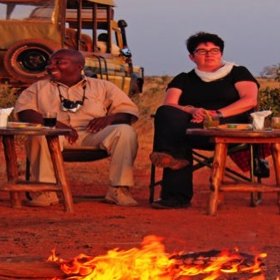
Employment opportunities for nearby communities
Satao Camp is located inside Tsavo East National Park, surrounded by bushy grassland and open plains, semi-arid acacia scrub and woodlands. Nurturing a positive relationship with locals has been an on-going commitment which aims to provide employment opportunities and develop community empowerment projects. Approximately 85% of all employees are hired from the local Taita and Duruma communities, with a few others from the indigenous Waliangulu community.
Advantages of becoming a member of the family at Satao include adequate remuneration, daily briefing meetings for training and communication purposes as well as a health and safety policy. All kitchen staff benefit from bi-annual medical check-ups, and training on first-aid is provided for every team member. To ensure employee satisfaction, the camp has a staff welfare committee to handle staff issues and affairs.
Empowerment initiatives are extended to provide support to the local Miasenye and Marungu primary schools. Donations include linen, kitchen utensils, clothes and food.
See more great sustainability projects in Kenya
Communications
- Communications
- As well as a landline phone, Satao has FM radio, email in the office and adequate WiFi in the lounge.
Each tent has a paging button, to guests can call for an escort or a drink. - TV & radio
- The TV in the staff mess can be viewed by guests for big events.
Health & safety
- Malarial protection recommended
- Yes
- Medical care
- Satao has a first-aid box; ‘2 or 3 staff’ have received training and in theory get refresher training annually. Voi hospital is the closest major medical facility and can be reached in about 45 minutes in an emergency. Flying doctors from Nairobi or Malindi can land at Satao airstrip, just minutes from the camp.
- Dangerous animals
- High Risk
- Security measures
- Unarmed askaris patrol the camp day and night. Armed KWS patrols periodically patrol the area near the camp and can always be called quickly.
- Fire safety
- There’s a fire assembly point in the car park and all staff receive fire training twice a year. There are fire extinguishers all over the camp.
Useful info
- Disabled access
- In Place
- Laundry facilities
- Full Laundry Service - Extra Charge
- Money
- The cashier has a safe box for safe keeping of valuables, but there are no safes in tents. There’s no formal foreign exchange service.
Plan and book your trip with Expert Africa
All of our trips are tailor-made, so we'll always adapt them to suit you. Talk to an Expert and let us plan and arrange your perfect trip.

Talk to an Expert
Call or email us now! We’ll match you with the Specialist in our team who is best suited to help you. Then together we can start planning your trip.

Set up your itinerary
Based on our experience and your ideas, your specialist will create a detailed, costed itinerary. We’ll refine it together, until we have a trip that you’re perfectly happy with.

Prepare for your trip
The same Specialist will make the seamless arrangements for your trip, send you detailed travel documents, and be available to answer any questions before you depart.

Travel with peace of mind
After you set off, you’ll be cared for by our partners in Africa, most of whom have worked with Expert Africa for decades. And if you ever need us urgently, we’re available 24/7.

When you return
We love to learn about your trip, and so will always be grateful if you’ve the time to give feedback to your Specialist when you return.
Satao Camp's location
Look closer at the environment and surroundings of Satao Camp.
Other lodges in Tsavo East National Park
Alternative places to stay in this same area.
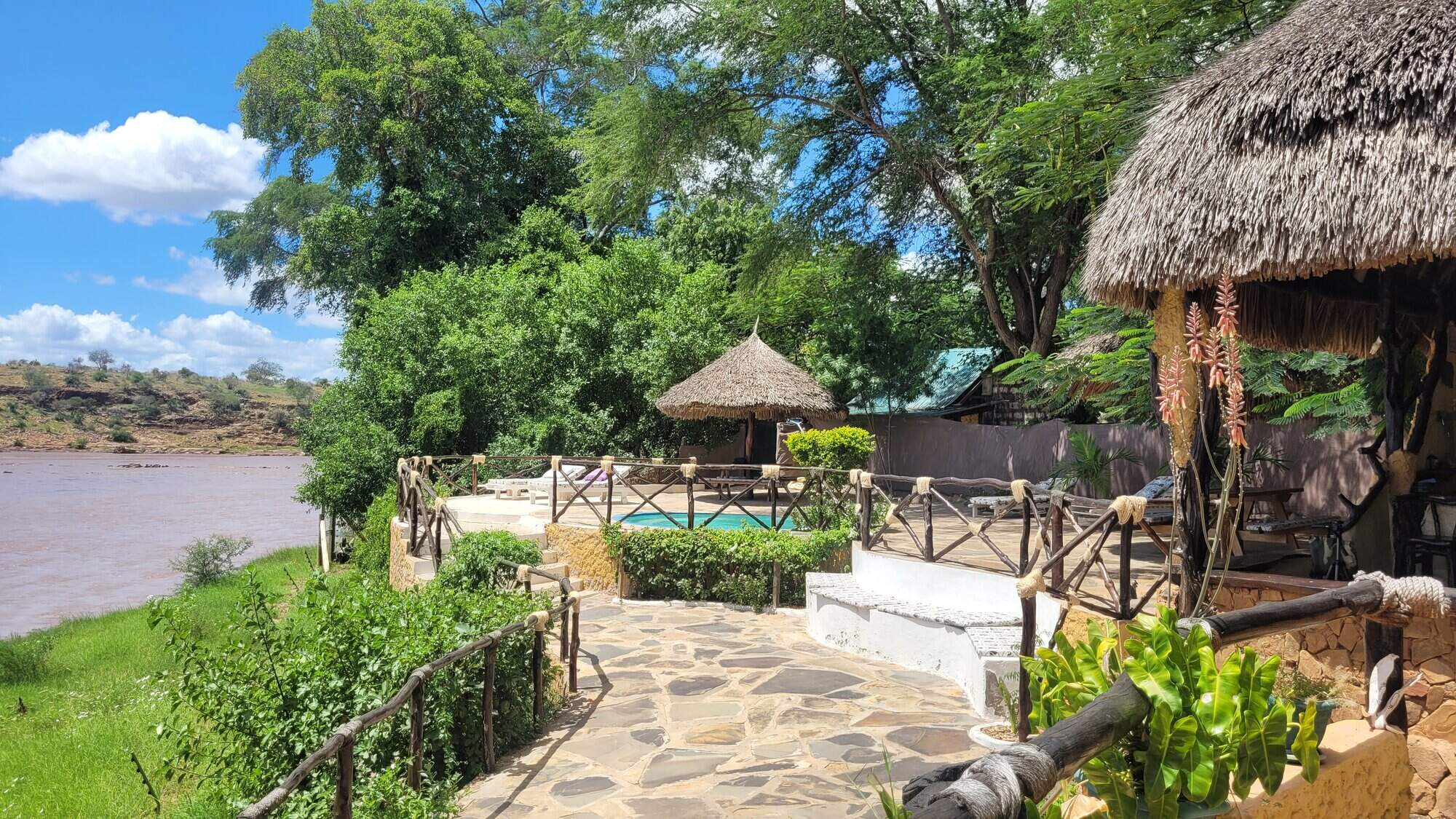
Kulalu Camp
Kulalu is a small camp on the banks of the Galana River, located on the outskirts of Tsavo East National Park and the Galana Conservancy.
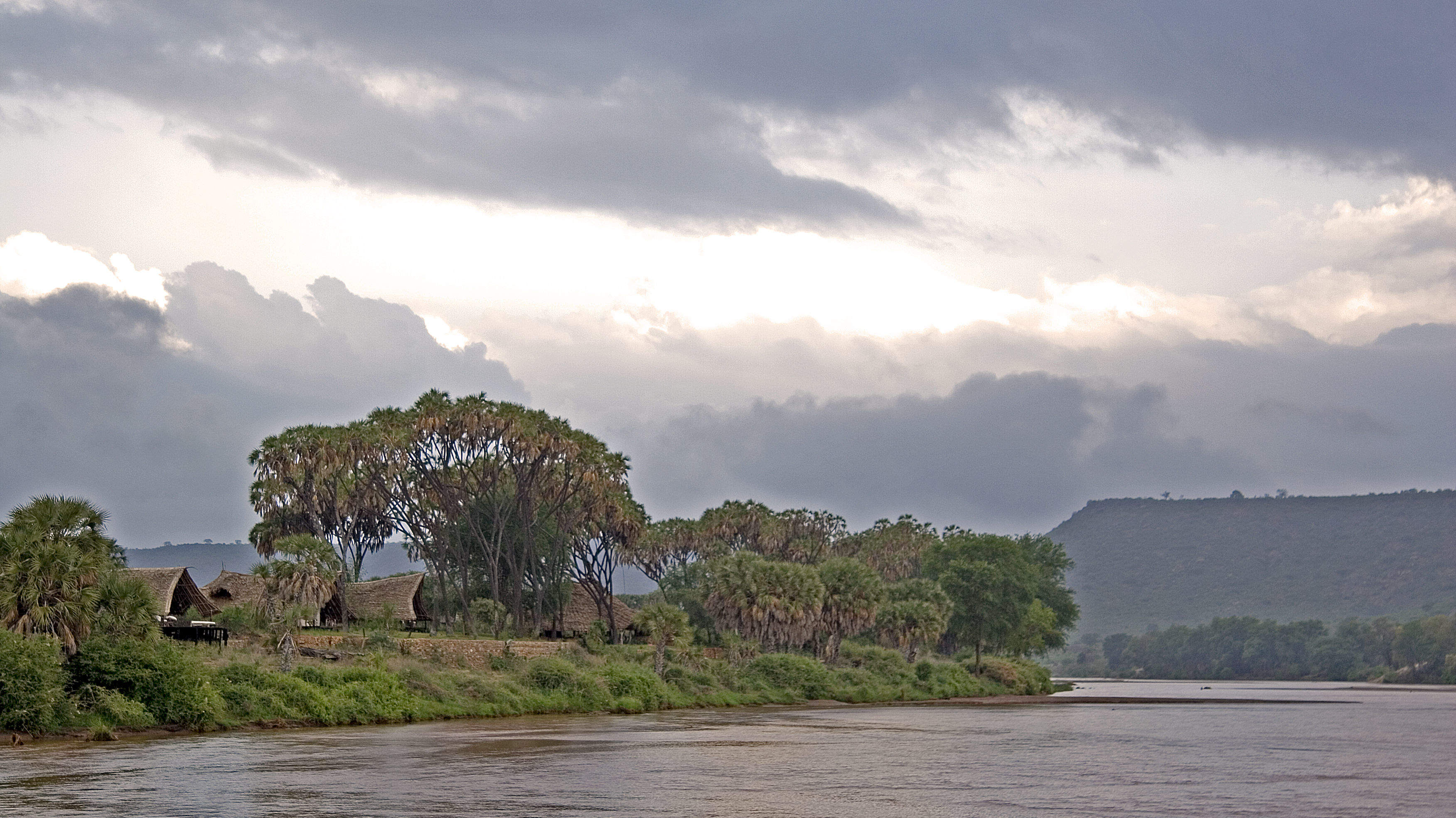
Galdessa
Galdessa is Tsavo East National Park’s best safari camp, sitting in a spectacular location on the banks of the broad Galana River.
When to go to Tsavo East National Park
Our month by month guide: What it's like to visit Satao Camp in Tsavo East National Park
Jan
Feb
Mar
Apr
May
Jun
Jul
Aug
Sep
Oct
Nov
Dec
Kenya in January
Clear, hot days and warm nights make this high season a popular time for safaris and it’s also good for diving and snorkelling as water clarity is excellent and gets better as the dry season progresses. Most lodges and tented camps treat January after the New Year week is over, as mid-season, making it a good compromise in terms of value for money with reasonably reliable, dry weather and some greenery left in the landscape.
Expert Africa bases its description of climate and weather in January, like the other months of the year, on the climate records of roughly the last 100 years, and it's fair to say that the weather and seasons since the beginning of this century have been highly irregular and unpredictable.
- On average, January is the second driest month of the year
- Elephants dig waterholes in the dry riverbed in the Samburu reserve.
- Wildebeest and many antelope have their calving season, to February.
- Migrant birds are seen in huge numbers, especially in the Rift Valley.
- Sea water clarity around the coral reefs generally good.
Our view
Fantastic: the very best time to visit
Weather in January
Kenya in February
With the short dry season well established, the grass grazed down and wildlife gathering close to water points, this is still a good time for a safari. Good water clarity in the Indian Ocean's coastal waters makes for excellent diving and snorkelling conditions.
Expert Africa bases its description of climate and weather in February, like the other months of the year, on the climate records of roughly the last 100 years, and it's fair to say that the weather and seasons since the beginning of this century have been highly irregular and unpredictable.
- On average, February is the driest month of the year.
- It’s sometimes possible to swim with whale sharks at Diani Beach.
- Migrant birds are still seen everywhere, especially near water.
- This is usually peak calving season for wildebeest and many antelopes.
- This month is often the hottest of the year, especially on the coast.
Our view
A very good time to visit
Weather in February
Kenya in March
Hot, increasingly humid weather – with good diving and snorkelling conditions at the start of the month – gives way to rains and lower accommodation costs. Expert Africa bases its description of climate and weather in March, like the other months of the year, on the climate records of roughly the last 100 years, and predicting the seasons since the beginning of this century has been difficult.
March is the month when – traditionally – intensely hot conditions build up until a cloudburst finally happens at the end of the month or in early April, to relieve the humidity. As ever, regional variations across the country can greatly impact on visitors' experiences.
- Sea-water clarity is best for diving before the long rains start.
- Visitor numbers are low, though the Easter holidays can be busier.
- Night skies can be scintillatingly clear in early March.
- Cropped down savannah grasses can make it easier to see the wildlife.
- Temperartures climb high, especially at lower elevations.
Our view
A good time to visit, with pros & cons
Weather in March
Kenya in April
April sees the full onset of the southeast monsoon wind or kusi, which heralds the long rains. Temperatures drop soon after the rains are established and you’ll often have facilities largely to yourself in this more affordable low season, sometimes known as the "green season". The bush quickly springs to life, with greenery sprouting almost before your eyes. While you're likely to get a fair number of heavy showers, the breaks in the rain can yield sparklingly clear conditions.
With the dust settled and bright sun piercing the clouds, conditions can be sublime for photography, especially first thing in the morning or in the late afternoon with another storm brewing. You may be lucky, or you may find conditions very wet and muddy.
- A wet month, the coast often gets more than 300mm (12in) of rain.
- Sunny spells can provide great light for photography.
- Buffalo and zebra calving season often happens in this month.
- Baby crocodiles hatch, for example on Central Island in Lake Turkana.
- Palearctic migrant birds gather to fly north to breeding grounds.
Our view
A time to avoid if possible
Weather in April
Kenya in May
While game viewing can be trickier as vegetation runs riot, between the cloudbursts the colours and light are great for photography at this time of year. Expert Africa bases its description of climate and weather in May, like the other months of the year, on the climate records of roughly the last 100 years, and while it's reasonable to expect heavy rains in many parts during this month, especially on the coast, the rains don't always come evenly or in some areas come at all.
In an El Niño year, the so-called long rains that normally are established across much of the country by May can be meagre, to the despair of farmers. On the other hand in a La Niña year, the long rains can bring floods. On the coast, the monsoon winds make the climate much more predictable, with heavy rains common throughout this month.
- Frogs breed in the ponds in the Arabuko Sokoke Forest near Watamu.
- Wildebeest, impala and other grazers are in rut (the breeding season).
- Kilimanjaro looks its best as heavy rain falls as snow on the summit.
- There's a sharp peek of rainfall on the coast with many rainy days.
- Accommodation prices are uniformly low, while some camps close.
Our view
A time to avoid if possible
Weather in May
Kenya in June
The rains give way to cloudy, cooler weather, often making for comfortable conditions by the end of the month, especially in the highlands. Starting from mid-June or the beginning of July and running until the end of October, this is the high season, and accordingly has higher accommodation rates and – at least until early September – higher numbers of visitors.
While the early part of June can often be rainy on the coast, it can be a great time to go on safari, with fresh greenery, many young animals and good photographic conditions with clear air.
- The Taru Desert, inland from the coast, is carpeted with flowers.
- The Lake Turkana Cultural Festival is held in Loiyangalani.
- Madaraka Day (commemorating self rule) is 1 June.
- The annual Lewa marathon runs a course through the wildlife.
- The Diani Rules "sports" event rips up the rulebook at Diani Beach.
Our view
A good time to visit, with pros & cons
Weather in June
Kenya in July
Kenya’s “winter" season sets in (winter is a misnomer but locals feel the change), and the highlands can be rather grey. Skies are often cloudy and the days can be surprisingly cool, with an average daytime high in many highland safari areas of 15-20°C and night-time temperatures dropping below 10°C in Nairobi and the highlands. Lower parts of the country and the coast are usually warm and dry, typically reaching highs of around 25°C with lows in the high teens.
As this is the start of the high season, coinciding with the usual arrival of the wildebeest migration in the Maasai Mara, July is a busy month. Ask your Expert Africa specialist to advise on how to avoid the crowds, which is not that difficult to do.
- The wildebeest migration usually reaches the Maasai Mara in July.
- Simbi Lake (Kisumu) and Crater Lake (Naivasha) can attract flamingoes.
- Watersports start to pick up and some surfing is possible at Malindi.
- Afternoon thunderstorms are a common feature in the Maasai Mara.
- The sea can be choppy along the coast, making diving difficult.
Our view
A good time to visit, with pros & cons
Weather in July
Kenya in August
The Great Migration fills the plains of the Maasai Mara, and school’s out, so the park roads are full of tourists – ask your Expert Africa specialist for advice on crowd avoidance tactics. Choose a private conservancy rather than a public national park or national reserve for quieter conditions.
Like July, August is generally mild and relatively dry in the safari areas, but it can be very chilly in the highlands, even in the middle of the day, and hail occasionally falls above altitudes of around 2,400m (8,000ft). Nairobi can be disappointingly overcast, with low cloud.
- Apart from Christmas holidays, this is the busiest month of the year.
- Late August sees peak wildebeest drama at the Mara River crossings.
- Coastal winds are good for kite- and wind-surfing.
- Few mosquitoes are around at this generally dry time of year.
- The annual Camel Derby takes place in the Samburu capital, Maralal.
Our view
A good time to visit, with pros & cons
Weather in August
Kenya in September
The skies clearing of cloud signals the start of hot, dry weather with little chance of rain – and, after the first few days of the month, far fewer visitors – making the latter part of September a good time for a quieter safari. While early September is often good for dramatic migration crossings along the Mara River, you might consider deliberately postponing your trip until later in the month, when the migration can still be very impressive and visitor numbers fewer.
If tourist surges are somewhat predictable, however, the patterns of the wildebeest migration are more volatile, and like all of Expert Africa's climate and weather assessments, they are based on accumulated years of experience rather than guaranteed certainty.
- This is still high season, with prices to match.
- Many river crossings take place on the Mara river in both directions.
- Natural bush fires flush out insects and small animals for predators.
- The Rift Valley Music Festival takes place by Lake Naivasha.
- With school holidays over by early September, late-month is quieter.
Our view
Fantastic: the very best time to visit
Weather in September
Kenya in October
Still hot, mostly dry and not too busy, this is many people’s preferred month for a safari, and it’s also good for diving and snorkelling. The wildebeest and zebra herds of the great migration are often still to be seen, though in dwindling numbers. The swamps of Amboseli attract thirsty wildlife including large herds of elephants.
While we wouldn't expect much rain across most of the country this month, the climate has become so unpredictable that you can never say never, and the possibiity of the short rains – usually associated with November to mid-December, starting early, can't be discounted.
- This month sees the tail end of the great migration in the Mara.
- Palearctic migrant birds start to arrive, staying until March.
- Turtle nests hatch at Watamu, until November.
- Amboseli elephants focus on the swamps for their daily water.
- The Indian Ocean monsoon winds turn from southeast to northeast.
Our view
A very good time to visit
Weather in October
Kenya in November
The northeast monsoon wind or kaskazi heralds the start of the “short rains", usually some time in the second half of the month. From November to mid-December, this is the low season, and accordingly has lower accommodation rates and lower visitor numbers. Across most of the country you can expect warm, somewhat cloudy weather, with occasional heavy showers and localised flooding.
Expert Africa bases its description of the climate in November, like the other months of the year, on the records of roughly the last 100 years, and it's fair to say that the seasons since the beginning of this century have been highly irregular and unpredictable: some years the short rains don't come at all, or don't reach every part of the country. In an El Niño year, the November short rains can be very heavy, but in a La Niña year, they can fail completely.
- Swimming with dolphins in Lamu can be done from now until April.
- Birders gather at Ngulia in Tsavo West to ring Palearctic migrants.
- The Lamu Cultural Festival takes over the town and Lamu Creek.
- Agricultural shows often take place regional market towns.
- This is low season, so camps can be great value, with special offers.
Our view
A good time to visit, with pros & cons
Weather in November
Kenya in December
In a typical December, the rains usually finish by middle of the month, leaving the landscape looking its best, under clear blue skies, and heralding the start of the second peak tourist season from around 20 December to the first week of January. Our assessment of the likely weather in December, like the other months of the year, is based on climate records, and it's fair to say that the seasons since the beginning of this century have been highly irregular and unpredictable.
Christmas can sometimes be wet, but most years the rains have finished a week or two earlier, with the festive season ushering in the perfect combination of clear skies and sunshine by day and starry nights.
- Christmas and New Year are busy, with the lodges and camps full.
- Rates are highest after 24 Dec, with supplements on public holidays.
- Republic Day and Independence day are celebrated on 12 December.
- Good kite- and wind-surfing restarts, with strong northeasterly winds.
- Mango season begins, providing excitement for primates and elephants.
Our view
A good time to visit, with pros & cons
Weather in December

Looking for inspiration on where to travel next?
Visit our trip chooser to explore your options and find inspiration for your perfect African adventure
Inspire me